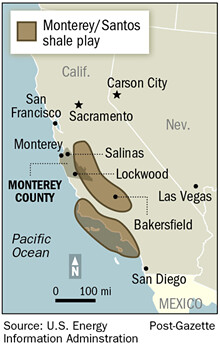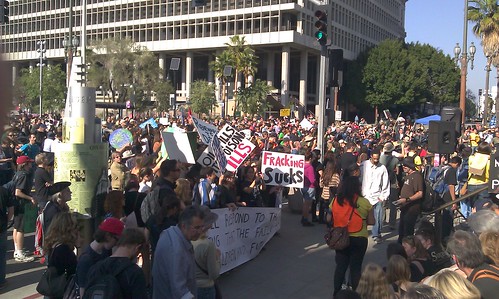The London-based Control Risks holds itself out as “an independent global risk consultancy specialising in helping organizations manage political, integrity, and security risks in complex and hostile environments.” Or, in practical terms, it provides anti-piracy services, handles kidnappings and other crises, and writes white papers analyzing terrorism risks in various countries. One suspects that this expertise doesn’t come cheap. Clients buy discretion for large sums of cash, but SourceWatch notes “a long history of working with the energy sector, covering ground in Algeria, Angola, Congo, Nigeria, Russia, Indonesia, Pakistan, Colombia, Ecuador, Venezuela, Dubai (United Arab Emirates), Sudan and Yemen.” And now it’s advising unnamed, but presumably energy-oriented and rich, businesses how to handle fracking activists.
Because a worried upstate New York farmer has a lot in common with a Somali pirate.
The splash page on “The Global Anti-Fracking Movement: What it wants, how it operates, and what’s next” is here. You’re supposed to be able to download the report only by giving an email address to receive more briefings, and if you’re a senior executive in the oil and gas industry you can get the report and a complimentary personal briefing. For those of us who are not senior executives in the oil and gas industry and who don’t want want to give our email address to a shadowy international business that may count Halliburton and Bechtel among its clients, here is the entire report (pdf format).
The report views American environmental activists through the same hostile lens as it uses on kidnappers of Exxon executives. It is shocked to report that “A notable feature of the anti-fracking movement – shared with other social movements such as Occupy – is the extensive use of online social media to disseminate information, organise and mobilise.” (p.8)
The white paper carefully separates those who call for an outright ban from those seeking tighter regulation: “the majority of the anti-fracking movement simply wants tighter environmental regulation of unconventional gas development. With tighter regulation, enforcement and accountability, a sizeable swathe of the anti-fracking movement – from grassroots activists with single-issue grievances to influential environmental NGOs such as the Us’s Natural Resources defense Council (NRdC) – is prepared to drop its objection to hydraulic fracturing.” (p.5) And it goes on to discuss, without actually suggesting that big green groups concerned about climate should co-opt local people concerned about their food and water supply, wink, nudge (p.9):
International environmental NGOs also play a key global networking role. For example, Friends of the Earth, Greenpeace and the World Wide Fund for Nature (formerly World Wildlife Fund) each mount anti-fracking advocacy campaigns and support local anti-fracking groups. yet in contrast with grassroots activists, focused primarily on local social, economic and environmental impacts, international environmental NGOs situate unconventional gas extraction largely within their efforts on climate change.
The intervention of international NGOs has inevitably pulled the anti-fracking movement – at the global level – towards the climate change agenda, meaning that purely climate change-focused groups, such as 350.org, have obtained a prominent position. This
has occasionally resulted in friction within the anti-fracking movement, to the extent that some climate change-focused NGOs – though not the three listed above – view unconventional gas as a low carbon alternative to coal. Not only do such groups ignore
pressing local impact concerns, they may also be more amenable to tighter regulation as opposed to an outright ban.
 Control Risks’ final suggestions for handling those pesky activists: “acknowledge grievances,” “engage local communities,” “reduce impacts,” and “create more winners” (pay people). But nothing about actually listening to the activists, cleaning up wastewater, disclosing toxic fluids, or actually reducing carbon emissions.
Control Risks’ final suggestions for handling those pesky activists: “acknowledge grievances,” “engage local communities,” “reduce impacts,” and “create more winners” (pay people). But nothing about actually listening to the activists, cleaning up wastewater, disclosing toxic fluids, or actually reducing carbon emissions.
California is next in line for a fracking boom, if the clients of Control Risks have their way – the federal Bureau of Land Management’s first auction of fracking leases sold 18,000 acres in ten minutes flat. The divide-and-conquer strategy is just beginning; most large green groups have stayed silent on the woefully insufficient draft regulations recently proposed, Very Serious Editorials opine that full disclosure of fracking fluids is somehow sufficient, bills being introduced echo the call for regulation rather than a moratorium, and efforts within the California Democratic Party to call for a moratorium are being watered down.
As for me, I’m not going to kidnap or terrorize the pro-fracking folk. I just don’t want them doing to the vineyards and suburbs of California what has been done to the farms of Pennsylvania and New York. If you live in California, click here to tell Governor Brown to ban fracking.




 Brown looks long-term on impending climate crisis
Brown looks long-term on impending climate crisis




You must be logged in to post a comment.